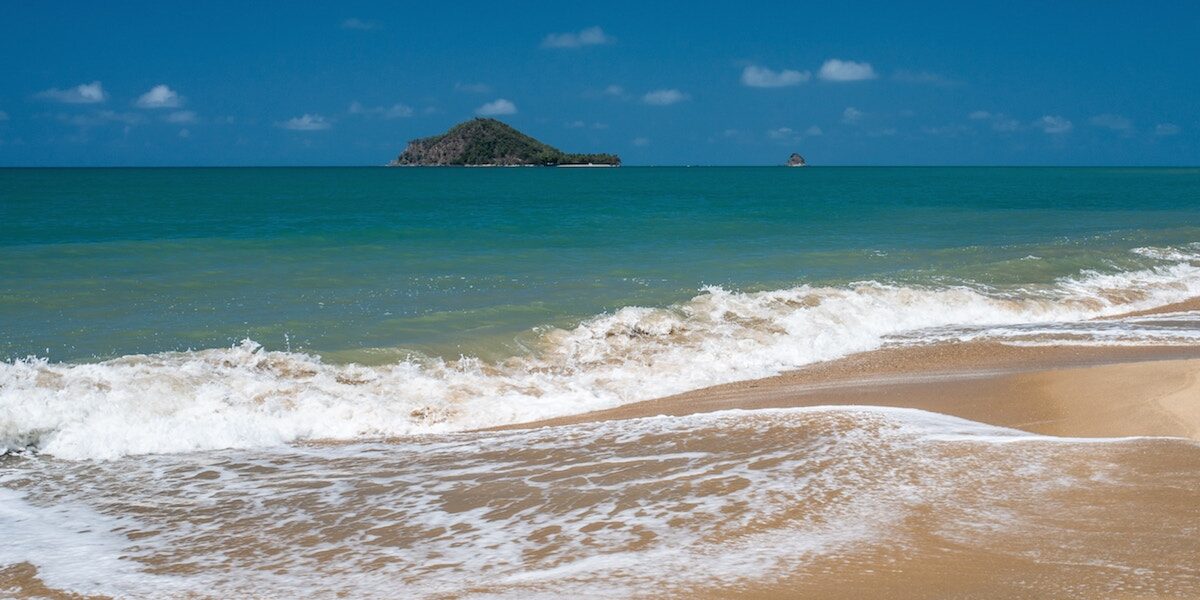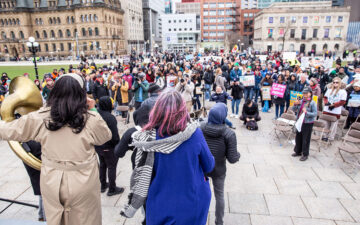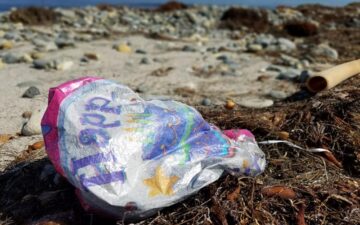By Mark J. Spalding, President
The Ocean Foundation A version of this blog originally appeared on National Geographic’s Ocean Views
One recent weekend, I drove north from Washington with some trepidation. It had been a beautiful October day the last time I headed to Long Beach, New York, across Staten Island and on by the Rockaways. Then, I was excited about seeing our colleagues in the Surfrider International community who were gathering for their annual meeting. Our hotel and gracious host, the Allegria, opened right onto the boardwalk and we watched hundreds of people jog, stroll, and ride by on their bikes, enjoying the ocean.
As the international meeting ended, the East Coast chapter representatives of Surfrider were gathering for their annual meeting over the weekend. Needless to say, coastal New York and New Jersey were well represented. We all enjoyed the overlapping time to get acquainted and share common issues. And, as I said, the weather was beautiful and the surf was up.
When Superstorm Sandy swept in and away just two weeks later, she left behind a seriously damaged coast and seriously shaken people. We watched in horror as the reports came in—this Surfrider chapter leader’s house was destroyed (among many), the Allegria lobby filled with water and sand, and Long Beach’s beloved boardwalk, like so many others, was a shambles.
All the way north on my most recent trip, there was evidence of power of storms, Sandy and those that followed this winter—downed trees, rows of plastic bags caught in trees high above the road way, and the inevitable roadside signs offering help with mold abatement, rewiring, insurance, and other post storm needs. I was on my way to a workshop co-hosted by The Ocean Foundation and Surfrider Foundation that sought to bring together federal and other experts, local chapter leaders, and Surfrider’s national staff to discuss how Surfrider chapters could work to support post-storm recovery efforts now and in the future in ways that respected the beach and the communities that depend on healthy coastal resources for their social, economic, and environmental well-being. Nearly two dozen people had volunteered their weekend to participate in this workshop and go back to inform their fellow chapter members.
Gathered once again at the Allegria, we heard the horror stories and the recovery stories.
And we learned together.
▪ Surfing is much a part of life along the mid-Atlantic coast as in other more iconic areas such as southern California or Hawaii—it’s part of the economy as well as the culture.
▪ Surfing has a long history in the region—Renowned Olympic swimmer and surfing pioneer Duke Kahanamoku surfed just off this hotel in 1918 in a surf demonstration organized by the Red Cross as part of an event to welcome home the troops from the First World War.
▪ Sandy’s surge picked winners and losers—in some places the natural dune barriers held and in others they failed.
▪ In Sandy, some folks lost their homes, many lost their first floors, and many homes are still not safe to live in, nearly half a year later.
▪ Here in Long Beach, the sentiment is strong that “it is never going to be the same: The sand, the beach, everything is different and can’t be remade as it was.”
▪ The Jersey shore chapter reps shared that “We became experts in ripping out dry wall, pulling up flooring, and remediating mold.” But now the mold has gone beyond the grassroots level of expertise.
▪ After Sandy, some townships took the sand from their streets, and put it back on the beach. Others took the time to test the sand, filter debris out of the sand, and, in some cases, wash the sand first because much of it was contaminated with sewage, gasoline and other chemicals.
▪ Long Beach’s sifting operations take place every day with huge trucks lumbering in one direction with dirty sand and in the other direction with clean sand—the rumble served as the soundtrack to our meeting.
I was surprised to learn that no government or private agency has produced a single comprehensive report on the impacts of Sandy, both immediate and longer term. Even within the states, the depth of information about plans for recovery and what needs to be fixed seems to be based more on hearsay than a comprehensive, integrated plan that addresses the needs of the communities. Our little band of volunteers from diverse walks of life, including our TOF Board of Advisors member Hooper Brooks, was not going to write that plan in a weekend, no matter how willing.
So, why were we there in Long Beach? With the immediacy of the storm and response behind them, the Surfrider Chapters are seeking to reactivate their spirited volunteers into beach clean ups, the Rise Above Plastics campaign, and of course, providing public input into next steps in post-Sandy recovery. And, we had to think about what could we learn from our experience with Sandy?
The goal of our workshop was to combine the expertise of our guest experts, The Ocean Foundation, and Surfrider staff from California and Florida with the expertise and experiences of the local staff and volunteers to develop a set of principles that will help shape future projects on the NY/NJ coast. These principles will also have a larger value by shaping the future response to inevitable future coastal disasters.
So we rolled up our sleeves and worked together as a team to draft this set of principles, which are still in development. The basis of these principles focused on the need to Restore, Rebuild, and Rethink.
They were geared around addressing some shared priorities: Natural Needs (the protection and restoration of coastal environmental resources); Cultural Needs (repairing the damage to historical sites and rebuilding of recreational amenities such as boardwalks, parks, trails, and beaches); and Economic Repair (acknowledging the loss of income from healthy natural and other recreational amenities, the damage to working waterfronts, and the need for rebuilding the rebuilding of local retail and residential capacity to support the local economy).
When completed, the principles will also look at the different stages of dealing with a super storm and how thinking about them now can guide present tense actions for future strength:
Stage 1. Survive the storm—monitoring, preparation, and evacuation (days)
Stage 2. Emergency Response (days/weeks)– the instinct is to quickly work to put things back the way they were, even when may be contrary to steps 3 and 4 in the long term—important to get systems up and running to support people and reduce harm (e.g. sewage or gas pipe breaks)
Stage 3. Recovery (weeks/months) – here the basic services are returning to normal where possible, sand and debris have been cleared from areas and clean-up continues, plans for larger infrastructure repair are underway, and businesses and homes are habitable again
Stage 4. Resilience (months/years): This is where the workshop focused on engaging community leaders and other decisionmakers in having systems in place to address super storms that not only prepare for Stages 1-3, but also think about future community health and reduced vulnerability.
▪ Rebuild for resilience – current law makes it hard to consider future super storms when rebuilding, and it is important that communities strive to consider such actions as raising buildings, recreating natural buffers, and building boardwalks in ways that are less vulnerable
▪ Relocate for resilience – we have to accept that in some places there may be no way to rebuild with strength and safety in mind—in those places, the front row of human development may have to become the natural buffers we recreate, to preserve the human communities behind them.
No one thinks it is going to be easy, and, after a full, long day of work, the basic framework was in place. Next steps were identified and given due dates. The volunteers dispersed for the long drives home to Delaware, New Jersey, and other points along the coast. And I took a tour of some of the nearby damage and recovery efforts from Sandy. As with Katrina and the other storms of 2005 in the Gulf and Florida, as with the tsunamis of 2004 and 2011, the evidence of the sheer power of the ocean pouring onto land seems overwhelming (see the Storm Surge Database).
When I was young, a long dead lake near my hometown of Corcoran, California, began to fill and threatened to flood the town. A huge levy was build of earth using wrecked and used cars to quickly create structure for the levy. The levy held. Here in Long Beach, they did not get to do that. And it might not have worked.
When the tall dunes at the eastern end of town near the historic Lido Towers succumbed to Sandy’s surge, as much as three feet of sand was left behind across that part of the community, a long way from the beach. Where the dunes did not fail, the houses behind them suffered relatively little damage, if any at all. So the natural systems did their best and the human community needs to do the same.
As I drove away from the meeting, I was reminded that there is a lot to be done, not just in this small group, but on the thousands of miles of coastline that rim the world’s ocean. These big storms leave their mark across states and nations—whether it is Katrina in the Gulf, or Irene which flooded much of the inland northeast U.S. in 2011, or 2012’s Isaac which brought the oil from the BP spill back into the Gulf’s beaches, marshes and fishing grounds, or, Superstorm Sandy, which displaced thousands of people from Jamaica to New England. Across the world, most of the human population lives within 50 miles of the coast. Preparing for these major events has to be integrated into local, regional, national, and even international planning. All of us can and should take part.







